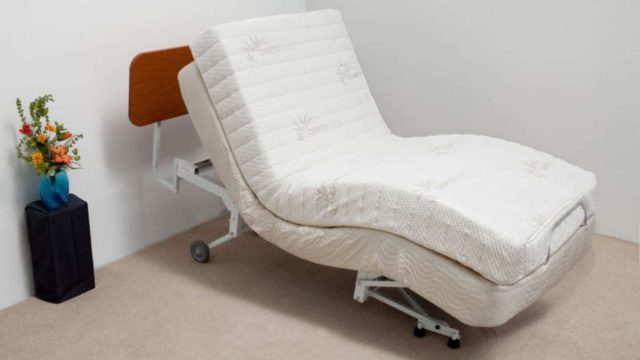To accommodate a patient’s demands, health-related adjustments such as bed height, body elevation and lowering, and head and leg placement may be made. For people who are immobilised or spend the most of their time in bed, medical beds with additional settings and options are essential to minimise pressure sores. When looking for hospital bed rentals, you’ll see that they come in three different types: manual, semi-electric, and fully electric, as well as more modern varieties (such as bariatric beds).
You can pick between manual and electric hospital beds for your beds. Manual hospital beds, on the other hand, are significantly less expensive, but they do not necessarily give extra comforts. The equipment can rise and descend, but it requires human involvement, which might take the caretaker some time.
A manual bed may be the best option for individuals who need to adjust the height of their bed regularly, thanks to its low cost. Some hospital beds are fully electric, while others are partially electric. A completely electronic bed allows for remote height, head, and foot adjustments, as well as electric height adjustments alone, whereas a partially electronic bed allows for electric height adjustments but lacks the option to manually adjust the head and feet. This implies that a semi-electric bed may suffice if the patient’s health is excellent, but an electric hospital bed is required if the patient’s health is poor..
Manual
Hand cranks are used to raise and lower the bunk in addition to raising and lowering the head and foot of the bed. This is the most affordable choice in our product line, and it’s perfect for people who don’t need to change positions frequently. Hand cranks are frequently found at the foot of the bed by physically healthy people, and they must be used.
Semi Electric
An electric motor is used to raise and lower the bed. The gadget’s buttons may be used to rotate the device. The bed must be manually cranked by someone who is physically capable of doing so in order to operate it. These beds are ideal for folks who want the convenience of touch-button controls but do not require regular modifications to their bed’s height.
Full Electric
To compensate for the lack of a manual crank, the patient or caregiver will change the bed’s height and position with a hand pendant, which eliminates the need for the crank (unless there is a power outage, However, several beds also have a backup battery that can support the bed in an emergency). Patients are free to roam around on their beds, which may be elevated or modified to allow attendants to tend to them or change their linens. Trendelenburg, reverse Trendelenburg, and cardiac chair positions are common in full electric beds.
Mattress
Mattresses are not required because medical beds are included in the package. For people who are unable to move or who spend the most of their time in bed, the right mattress is vital.
Bedsores, pressure ulcers, and decubitus ulcers are all painful bruises on the skin and beneath the skin that are commonly characterized as such. They are most commonly seen in weight-bearing parts of the body that are subjected to pressure, dampness, shear, friction, or a combination of these components. While lying down, patients frequently develop bed sores on their heels, sacrum, knees, shoulder blades, and back of the skull. Bed sores on the back of the head can be caused by shear pressures on the head, shoulder blades, and sacrum in a reclining position, whereas bed sores on the lower back can be caused by friction forces on the patient’s buttocks and feet.
Types of Mattresses
People choose innerspring mattresses because they are less expensive and more traditional. If the patient is immobile or spends the most of the day in bed, these mattresses may cause pain and heat in certain areas, which can develop to bed sores. This advice is particularly crucial for patients who spend more than 10 hours in bed. Because of these issues, hospital bed rental no longer recommends innerspring mattresses for hospital bed sales.
Mattresses made of therapeutic foam are developed to treat patients who suffer from pressure ulcers. Softer foam is used to cover pressure points like the head, foot, elbows, and so on, while a more durable foam is used to cover the mattress’s borders.
To adjust both air pressure and wetness on the skin, hair cells in alternating pressure mattresses alternate between inflating and deflating. These mattresses can also help to improve the circulatory system and oxygenation in the tissues. With the use of this item, painful beds may be protected from discomfort, and old wounds can be treated.


